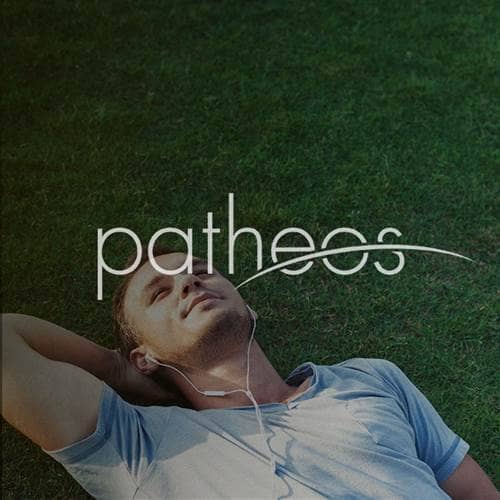- Trending:
- Easter
- |
- Lent
- |
- Forgiveness
- |
- Resurrection
- |
- Joy
- |
- Feminism

RELIGION LIBRARY
New Age
Beginnings
The New Age movement comprises a loose collection of individuals and groups who employ a variety of religious practices such as channeling, crystal work, and alternative healing in order to transform both themselves and the wider world. Unlike most more established religious movements, the New Age possesses no central leadership, institutions, or creedal requirements. As a loosely formed network of modern spiritual seekers, most scholars have found the New Age difficult to characterize.
In her book A Republic of the Mind and Spirit: A Cultural History of American Metaphysical Religion (2007), historian of religion Catherine Albanese identifies American "metaphysical religion"-of which today's New Age movement is but the most recent manifestation-as displaying four themes: a concern with powers of the mind, reliance on ancient or supposedly ancient cosmologies, a concern with "energies," and a therapeutic concept of salvation that emphasizes physical and mental healing.
Metaphysical religions often include elements of European mysticism and occultism (including Freemasonry and Rosicrucian philosophy), concepts from Hinduism and Buddhism, and Native American legacies of shamanism and earth energies. Works on European esoteric philosophy circulated in colonial America, while ideas from Asian religion arrived via the early 19th-century Theosophical movement. Even more Americans learned of karma, astral bodies, reincarnation, "ascended masters," gurus, and invisible Himalayan kingdoms from the late 19th-century Theosophical movement. A 19th-century health food and "natural healing" movement contributed ideas of vegetarianism and healing through mental powers and "natural" therapies rather than conventional medicine. Another contributor to today's New Age movement was Spiritualism, which trained thousands of persons to be spirit mediums (now called "channelers") and taught a doctrine of spiritual progress after death.
The New Age movement's immediate predecessor was New Thought, likewise a loose grouping of spiritual teachers, healers, new religious denominations, and philosophers. New Thought emphasized the divinity within each person while teaching that God is "supreme, universal, and everlasting." Its most important concept-repeated by numerous New Age teachers-was that "thoughts are things." In other words, "right thinking" can cure illness as well as creating better conditions (wealth, love, etc.) in an individual's life. New Thought, which was at its height from the 1880s through the 1930s, produced three enduring religious denominations: the Unity Church (Unity School of Christianity), the Church of Divine Science, and Religious Science.
Today's New Age movement represents a revitalization of American metaphysical religion that began in the 1960s and 1970s. During this era the disparate groups that would eventually comprise the New Age began to develop connections with one another through mailing lists, conferences and conventions, and publications. For example, the East-West Journal, a leading New Age magazine, began publishing in 1971. Many national and regional periodicals followed. Journals such as these served as a common core for the emerging New Age movement, bringing together a readership that shared a vision for self- and world-transformation through religious practices outside the western Jewish-Christian mainstream, notably alternative healing methods, Asian meditation and yoga techniques, channeling of spirits, development of psychic powers, and learning of esoteric knowledge.
During its earliest phase, the inchoate New Age appealed to members of religious communities that had evolved from the previous century's new religions: New Thought, Spiritualism, and Theosophy. The emergent New Age movement drew inspiration from each of these movements, but even more importantly, drew its adherents from them. New Age speakers often spoke at New Thought and Theosophy centers, and in many cases Spiritualist mediums-persons who claimed communication with the spirits of the dead- transformed themselves into New Age channelers.
Remarkably, the New Age movement did not primarily spread through institutional growth or face-to-face proselytizing, but through the sale of New Age periodicals and books. The most influential of these texts were purported to be channeled. New Age practitioners believe that through channeling a person enters a form of alternate consciousness during which a higher being, often an angel, enlightened soul, or spirit, uses the person as a communication vessel. The channeler or a partner generally records the message brought by this higher power, resulting in a set of channeled teachings. During the first decade of the growth of the New Age, two sets of channeled content not only became best sellers in the New Age market, but provided common language and concepts within the community. They also introduced channeling to a broader audience of New Age practitioners, making it one of the most common beliefs and practices within the movement.
The first of these channeled texts derived from the being known as Seth, transcribed by Jane Roberts from 1970 to 1984, and published as The Seth Material (1970), Seth Speaks: The Eternal Validity of the Soul (1972), Conversations with Seth (1980), and approximately a dozen other books. Importantly, the mainstream publishing company Prentice-Hall published all of these texts as mass-market paperbacks, enabling their distribution to a broad market of readers. The Seth content focused on development of the inner self as well as calling for transforming the world through individual enlightenment. Helen Schucman's A Course in Miracles (1975), channeled from an unnamed being whom the author implied was Christ, had an even more important effect: this single text served a common element that allowed New Age practitioners to gather and discuss, utilizing the text's format as both channeled knowledge, workbook, and student/teacher guide. Like the Seth material, A Course in Miracles called for self-development, specifically removing the blocks of inner awareness.
Thanks to national and regional periodicals and the channeled texts, by the mid-1980s the New Age existed as an informal network of spiritual seekers who shared subscriptions to similar magazines, read similar books, and shopped at the burgeoning number of New Age stores. Few outsiders paid much attention to the movement, however, until 1987, when two events brought the New Age to wider prominence. These two events, the Harmonic Convergence gatherings and actress Shirley MacLaine's "Out on a Limb" television series, galvanized a common sense of purpose among the New Age community.
The August 1987 Harmonic Convergence reveals the underlying nature of the New Age movement. Though New Age practitioners generally refer to the Convergence as a single event, in fact it represented dozens of gatherings around the world as thousands of practitioners celebrated what they believed was a cosmic marker of the inauguration of a new era-that is, a New Age-for the world and society. The same year, Shirley MacLaine's "Out on a Limb" television series, based on her book of the same name (1983), highlighted her own journey and made explicit mention of her identification with the New Age subculture, particularly her belief in reincarnation. Though most outsider observers generally scoffed at both MacLaine's claims of previous lives and the Harmonic Convergence attendees' claims that a new era had dawned, the attention that media outlets paid to both not only attracted attention to the New Age, but served as a manner for New Age practitioners to realize that they were not merely individuals in a spiritual quest, but members of a broader religious movement.
Study Questions:
1. What does the New Age movement comprise?
2. What are the four themes of New Age religion?
3. How has the New Age movement evolved out of the New Thought movement?
4. How has literacy helped the New Age spread?










